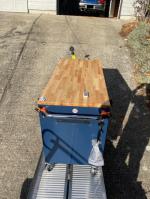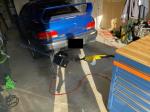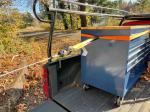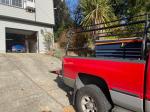Thoughts concerning the quality of the winch:Overall I'd say this is a pretty cheaply constructed winch. From the quality of the materials used, to the fit and finish, nothing about the winch screams quality, which is why I've only given it four stars. At the same time, it's super cheap, and it's great for what it is; which is why it get's the four stars. This is the only portable winch I found that has a 25' line (instead of 15') and has a radio controlled remote as well. Both very nice features. At 1,100lb (500kg) of lifting force, it's more than strong enough for the light duty work such a winch is really meant for.My use case:My home has a very steep driveway (steeper than appears in the photos, it's 12' of rise over a 33' foot run, or 36% grade). It's very difficult getting heavy items up into the garage, and to that end, I decided a winch was in order. First item to get the winch treatment was a 300lb tool chest, winch didn't even know anything was happening. Of course, in this situation, the winch is only pulling about 120lbs (or 40% of item weight) of resistance up that hill.To do this I simply anchored to my VERY heavy pallet shelving using some 250lb working weight rope (which looped back on itself is 500lb of working weight).I also like working on cars, and in the future I may have to pull non-running cars into the garage. To do this I'll drop anchors into the concrete (no pallet shelf anchoring for that task) and with the 36% grade, means I should be able to pull 2,750lbs of car up the driveway (2750 * 40% = 1,100). Of course, a car may cross that limit, so you can use a snatch block and double the line back, and that'll double the available lifting torque from 1,100lb to 2,200lb, and will increase the amount of weight I can pull up that hill to 5,500lb (more than enough for most cars, and any car I'll work).In fact, if you had to, you could add more pulleys and keep trading run for torque until you had enough for whatever it was you were doing. This is







